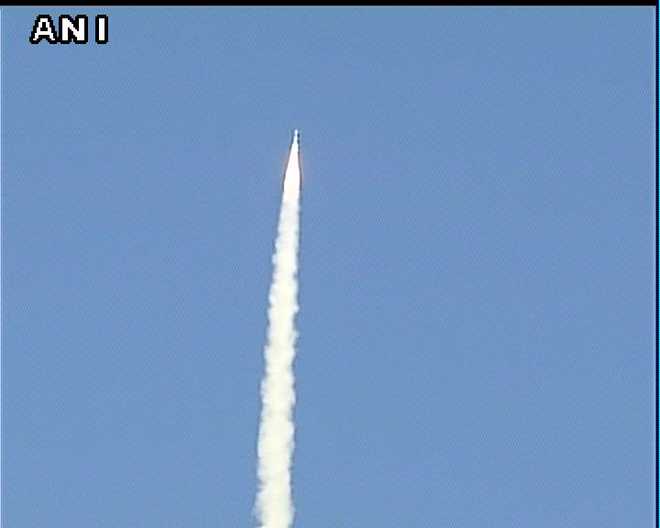Sriharikota, September 8
An Indian rocket with an over two tonne INSAT-3DR advanced weather satellite blasted off from the Sriharikota spaceport here on Thursday afternoon.
At precisely 4.50 pm the Geosynchronous Satellite Launch Vehicle-Development 5 (GSLV-F05) rose into sky with a deep growl, breaking free from the second launch pad at the Satish Dhawan Space Centre here. The launch was delayed for 40 minutes due to a delay in fuelling the rocket's third stage The 49.1 metre tall rocket, weighing 415.2 tonne rapidly rose towards the blue sky, spewing a thick orange plume.
The rocket would sling the INSAT-3DR satellite, which can also aid in search and rescue (SAR) operations, into a geosynchronous transfer orbit (GTO) around 17 minutes into the flight.
Indian Space Research Organisation (ISRO) scientists at the mission control centre here are intensely peering at their monitors to observe the rocket's progress.
(Follow ; and )
The GSLV is a three-stage rocket: the first stage is fired by solid fuel and its four strap-on motors by liquid fuel, the second is powered by liquid fuel and the third is the ISRO-developed cryogenic engine that is more efficient as it provides more thrust for every kilogram of propellant burnt.
ISRO is perfecting the crucial cryogenic engine technology to save precious foreign exchange by launching heavier satellites on its own.
ISRO currently relies on the European Space Agency's Ariane rocket to launch its heavy communication satellites.
India pays around Rs 500 crore ($75 million) as the launch fee for sending up a 3.5 tonne communication satellite. The satellite cost is separate.
ISRO can now launch satellites weighing around 2-2.5 tonnes till such time it readies an advanced GSLV variant — GSLV-Mark III — that can lug satellites weighing around four tonnes. - IANS
Unlock Exclusive Insights with The Tribune Premium
Take your experience further with Premium access.
Thought-provoking Opinions, Expert Analysis, In-depth Insights and other Member Only Benefits
Already a Member? Sign In Now










